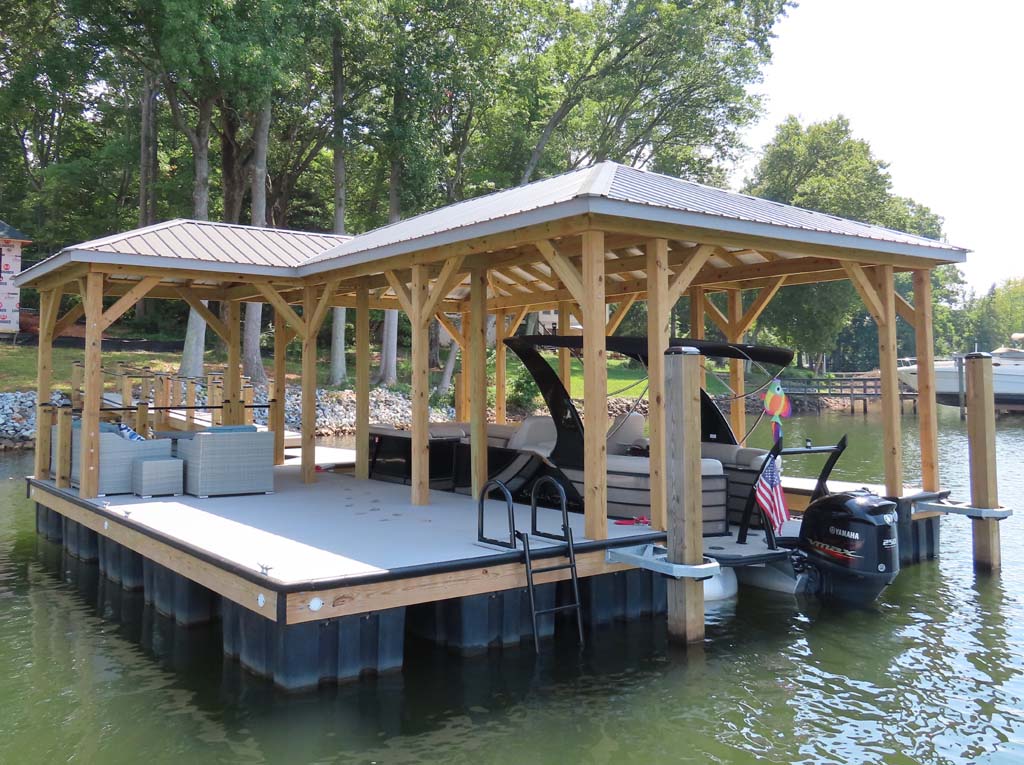Effective Dock Repair Work Techniques: Guaranteeing Structural Integrity
Guaranteeing the architectural integrity of docks via effective repair methods is paramount for the durability and safety and security of marine facilities. Ultimately, selecting the ideal fixing materials, such as composite products and corrosion-resistant alloys, is important for durability.
Evaluating Dock Damages
Analyzing dock damage is an important primary step in making certain the architectural integrity and security of any type of docking center. This initial assessment includes a thorough inspection to identify both visible and concealed problems. Key elements to take a look at consist of the dock's foundation, pilings, decking, and hardware. Each component must be inspected for indications of wear, rot, rust, or various other kinds of degradation that could endanger the architectural integrity.
Structural designers or qualified assessors commonly execute these evaluations using specialized techniques and devices. Underwater inspections may employ finder tools or from another location operated lorries (ROVs) to discover immersed damage. Over water, visual assessments are matched by making use of wetness meters and other analysis tools to discover underlying concerns not quickly visible to the naked eye.

Deciding On Repair Service Products
Selecting the proper repair service products is a crucial step in the dock remediation procedure, one that directly influences the durability and performance of the fixed framework. Material option need to be driven by elements such as ecological problems, load-bearing needs, and compatibility with existing dock elements. Timber is a conventional choice for docks due to its all-natural strength and aesthetic appeal. However, picking the right type of wood, such as pressure-treated lumber or naturally rot-resistant types like cedar or teak wood, is vital to withstand aquatic atmospheres.
In enhancement to wood, composite products are progressively popular due to their sturdiness and reduced maintenance needs. Composites, usually made from a mix of plastic and wood fibers, supply superb resistance to rot, bugs, and UV damages. For metal docks, choosing corrosion-resistant alloys such as galvanized steel or marine-grade light weight aluminum is necessary to protect against corrosion and guarantee structural honesty in saline water problems.
Epoxy resins and marine-grade sealants are indispensable for fixing cracks and securing joints, providing a water resistant barrier and enhancing the dock's overall stamina. By thoroughly choosing high-quality products, dock repairs can achieve resilient results, consequently guarding versus future degradation and making certain risk-free, reliable usage.
Architectural Reinforcement Strategies
Efficient architectural support strategies are important in making certain the stability and durability of dock repairs. One essential technique entails the usage of steel or composite reinforcement bars (rebar) within concrete frameworks. Rebar gives added tensile stamina, avoiding fractures and dispersing tons extra evenly. This approach is especially effective for docks subjected to heavy loads or severe ecological problems.
Another essential technique is the application of fiber-reinforced polymers (FRP) These products offer high strength-to-weight ratios and excellent resistance to deterioration, making them suitable for reinforcing wood or concrete anchors. FRP can be applied in sheets or strips and adhered with epoxy materials to boost architectural honesty.
Supporting and securing systems additionally play a critical function in architectural support. Cross-bracing, utilizing steel or wooden light beams, can counteract lateral pressures, decreasing guiding and movement. Anchoring systems, such as helical piers or driven stacks, offer a steady foundation by moving tons to deeper, much more secure dirt layers.
Lastly, the combination of load-distribution plates can help distribute weight extra equally throughout the dock's surface, minimizing localized anxiety points. These strategies collectively make sure that docks continue to be robust and safe, with the ability of holding up against the roughness of their functional setting.
Advanced Repair Methods

Another sophisticated technique involves underwater welding, which enables repairs to be carried out without the requirement to dewater the area. This method is specifically helpful for addressing architectural issues in immersed dock elements, making sure minimal disruption to procedures. Boosted welding strategies, paired with robotic systems, supply precision and dependability, therefore extending the life expectancy of the dock.
In addition, cathodic protection systems are carried out to prevent corrosion in metallic dock read what he said frameworks. By utilizing sacrificial anodes or satisfied present systems, these strategies successfully alleviate the electrochemical processes that lead to material deterioration.
Finally, progressed tracking innovations, such as architectural wellness surveillance (SHM) systems, give real-time data on the condition of dock structures. These systems allow aggressive maintenance and prompt treatments, eventually ensuring the lasting structural stability of the dock.
Maintenance and Avoidance
Upkeep and avoidance are basic concepts that underpin the long life and safety and security of dock structures. Routine inspections are extremely important, permitting for very early detection of wear and tear, prospective weaknesses, and environmental impacts. A positive method, entailing routine look for corrosion, rot, and architectural shifts, minimizes pricey fixings and lengthens the dock's operational life.
Preventive steps should include using protective coverings to metal elements to safeguard against rust and utilizing treated timber to resist degeneration. In addition, guaranteeing proper drain and ventilation can prevent water build-up, which is a common reason for architectural destruction. Incorporating top quality products and sticking to manufacturer standards during building and internet construction and repair work stages additionally play crucial functions in improving longevity.

Educating workers in dock upkeep best practices guarantees consistent application of preventative measures. Leveraging technical advancements, such as drones for evaluations and sensors for real-time tracking, can better boost upkeep initiatives. By prioritizing maintenance and prevention, dock proprietors can ensure architectural honesty, operational safety and security, and affordable monitoring over the dock's life-span.
Conclusion
Finally, keeping the structural integrity of marine centers necessitates extensive dock repair strategies. Complete inspections using advanced tools uncover both noticeable and concealed damages, while the choice of ideal fixing products enhances longevity. Carrying out architectural reinforcement techniques addresses tension points efficiently. Advanced repair strategies, paired with normal upkeep methods, make sure the dock remains risk-free and functional under diverse ecological problems. Embracing these approaches considerably extends the lifespan and capability of marine infrastructure.
Making sure the architectural stability of docks through effective repair methods is vital for the longevity and safety and security of aquatic facilities.Choosing the suitable fixing products is a critical step in the dock reconstruction procedure, one that directly affects the long life and efficiency of the repaired framework.Effective structural reinforcement methods are essential in ensuring the security and long life of dock fixings. By focusing on maintenance and prevention, dock proprietors can guarantee structural honesty, operational safety, and you could try here cost-efficient administration over the dock's life-span.
In verdict, keeping the architectural stability of marine facilities requires extensive dock repair methods.